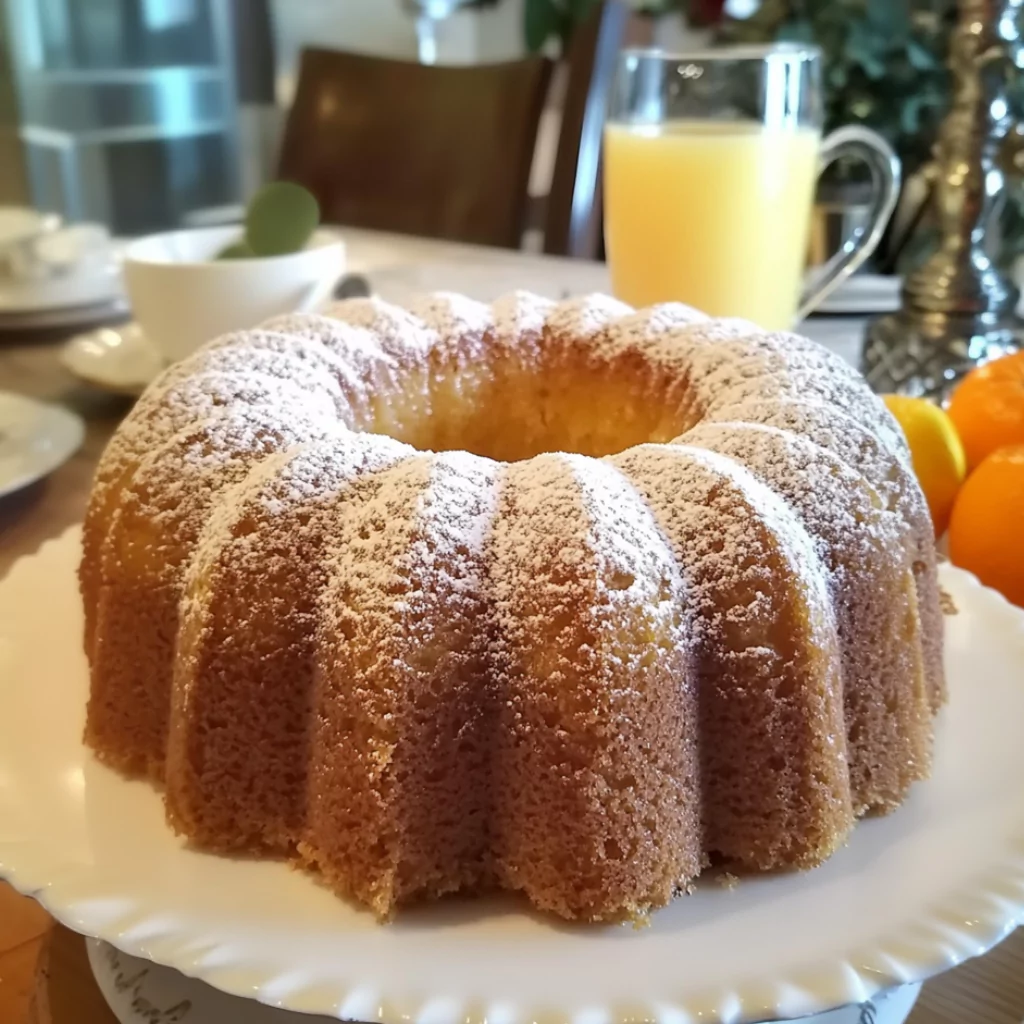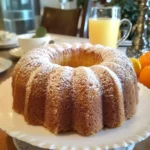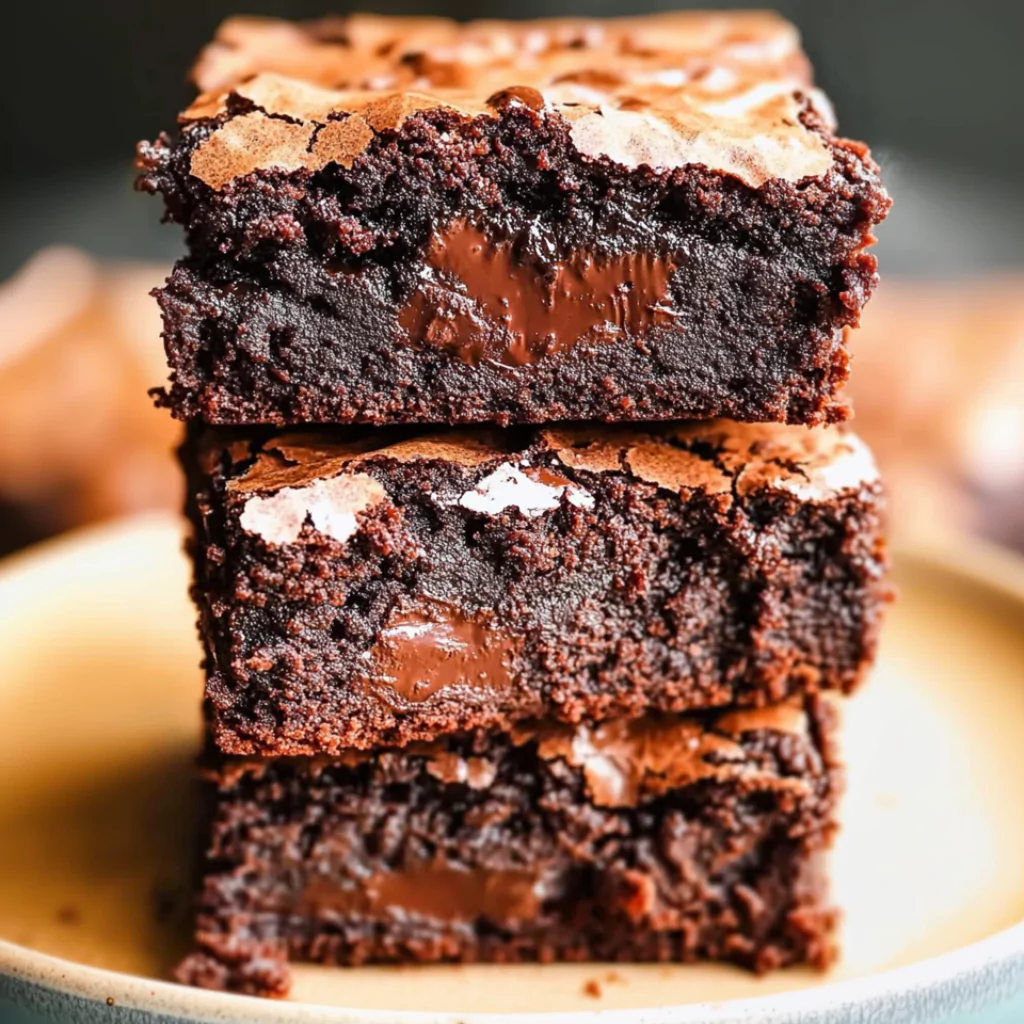Orange juice cake is a delightful dessert that combines the bright, tangy flavors of fresh oranges with the rich, moist texture of a classic cake. This citrus-infused treat is perfect for any occasion, from casual gatherings to festive celebrations. Unlike traditional cakes, orange juice cake incorporates fresh orange juice and zest, adding a natural sweetness and vibrant flavor that sets it apart. Whether you’re a seasoned baker or a beginner, this recipe is simple, requiring just a few essential ingredients and tools.

In this guide, we’ll cover everything you need to know about making the perfect orange juice cake—from its history and cultural significance to step-by-step instructions, ingredient choices, and essential baking tips. Get ready to elevate your baking skills and enjoy a cake that’s bursting with citrus goodness!
A Brief History and Cultural Significance
Citrus fruits have been a staple in baking for centuries, with oranges playing a key role in many traditional desserts worldwide. The use of orange juice in cakes can be traced back to Mediterranean and Middle Eastern cuisine, where citrus fruits were prized for their fresh aroma and ability to balance the richness of buttery desserts.
In the United States, orange juice cake gained popularity in the mid-20th century when convenience baking and boxed cake mixes became common. Many home bakers started adding fresh orange juice to enhance the flavor of their cakes, leading to various adaptations and modern twists. Today, orange juice cake is enjoyed in many forms, from simple bundt cakes to layered sponge cakes with creamy glazes.
Preparation Phase & Tools to Use
Essential Kitchen Tools
Before you start baking, having the right tools on hand makes the process smoother and ensures the best results. Here’s what you’ll need:
- Mixing Bowls: For combining wet and dry ingredients.
- Electric Mixer or Whisk: Helps achieve a smooth batter.
- Measuring Cups & Spoons: For accurate ingredient proportions.
- Citrus Zester or Grater: Extracts the flavorful zest from oranges.
- Cake Pan (Bundt or Round): Holds the batter while baking.
- Cooling Rack: Allows the cake to cool evenly after baking.
Why Each Tool is Important
- Mixing bowls prevent spills and allow for easy ingredient incorporation.
- An electric mixer helps beat butter and sugar to create a fluffy texture.
- A zester ensures fine, aromatic orange zest that enhances the cake’s citrus notes.
- A cooling rack prevents condensation buildup, keeping the cake from becoming soggy.
Ingredients List & Their Roles
A great orange juice cake starts with high-quality ingredients. Each component plays a specific role in achieving the perfect texture and flavor.
Main Ingredients
- All-Purpose Flour: Provides structure and stability.
- Granulated Sugar: Adds sweetness and helps create a soft texture.
- Butter or Oil: Ensures a moist and rich cake.
- Fresh Orange Juice: Infuses the cake with natural citrus flavor.
- Orange Zest: Enhances the orange aroma and taste.
- Eggs: Bind the ingredients and add moisture.
- Baking Powder: Acts as a leavening agent for a light, fluffy texture.
- Salt: Balances the sweetness and enhances overall flavor.
- Vanilla Extract: Complements the orange flavor.
Optional Add-Ins
- Greek Yogurt or Sour Cream: Adds extra moisture and richness.
- Cinnamon or Nutmeg: Provides a warm depth of flavor.
- Chopped Nuts: Adds crunch and texture.
Step-by-Step Instructions
1. Preparing the Batter
- Preheat the Oven: Set your oven to 350°F (175°C). Grease and flour your cake pan.
- Mix the Dry Ingredients: In a bowl, whisk together flour, baking powder, and salt. Set aside.
- Cream the Butter and Sugar: In another large bowl, beat butter and sugar together until light and fluffy.
- Add Eggs One at a Time: Beat well after each addition to maintain a smooth consistency.
- Incorporate the Orange Juice and Zest: Slowly mix in the fresh orange juice, orange zest, and vanilla extract.
- Alternate Adding Dry and Wet Ingredients: Gradually mix the dry ingredients into the wet mixture, stirring gently to avoid overmixing.
2. Baking the Cake
- Pour the Batter: Transfer the batter into the prepared cake pan, spreading it evenly.
- Bake: Place in the oven and bake for 40-45 minutes or until a toothpick inserted in the center comes out clean.
- Cool the Cake: Let the cake rest in the pan for 10 minutes, then transfer it to a cooling rack.
Glaze & Frosting Options
To enhance the cake’s flavor, you can top it with a delicious glaze or frosting.
Simple Orange Glaze
- 1 cup powdered sugar
- 3 tbsp fresh orange juice
- 1 tsp orange zest
- Whisk ingredients together until smooth.
- Drizzle over the cooled cake.
Cream Cheese Frosting
- 4 oz cream cheese, softened
- 1/2 cup powdered sugar
- 2 tbsp orange juice
- Beat cream cheese and sugar together.
- Add orange juice and mix until creamy.
- Spread over the cake for a richer texture.
Chocolate-Orange Drizzle
- 1/2 cup melted dark chocolate
- 2 tbsp orange juice
- Mix melted chocolate and orange juice.
- Drizzle over the cake for a decadent twist.
Perfect Side Dishes for Orange Juice Cake
Pairing orange juice cake with the right sides enhances the overall experience, balancing flavors and textures. Whether you’re serving it at brunch, afternoon tea, or as a dessert after dinner, complementary dishes can elevate its appeal.
Complementary Beverages
Orange juice cake pairs wonderfully with both hot and cold drinks. The right beverage choice can complement its citrusy notes and add depth to the overall tasting experience.
- Coffee & Espresso: The slight bitterness of coffee balances the cake’s sweetness.
- Hot Tea: Earl Grey, chamomile, or green tea enhance the citrus flavors.
- Milk or Almond Milk: A classic choice that smooths out the tanginess.
- Orange Creamsicle Cocktail: A fun, boozy twist on the cake’s flavors.
- Freshly Squeezed Orange Juice: Intensifies the citrus experience.
Light & Refreshing Side Dishes
Pairing orange juice cake with a fresh, crisp side can prevent the dessert from feeling too rich.
- Greek Yogurt with Honey & Nuts: A creamy and protein-rich option.
- Fruit Salad: A mix of berries, grapes, and mango offers a refreshing contrast.
- Cucumber and Mint Salad: A cool, refreshing side that cleanses the palate.
Dessert Pairings
Adding another small dessert alongside orange juice cake can create a more indulgent treat.
- Vanilla Ice Cream or Sorbet: The creamy texture complements the moist cake.
- Dark Chocolate Pieces: Adds richness that balances the citrusy brightness.
- Coconut Macaroons: The tropical flavor pairs well with orange zest.
Nutritional Information & Health Benefits
Orange juice cake, while a treat, has several ingredients that contribute to its nutritional value. Understanding its components allows for a more balanced indulgence.
Macronutrient Breakdown
A typical slice of orange juice cake provides carbohydrates, fats, and proteins in a balanced ratio.
- Carbohydrates: Derived from flour and sugar, providing energy.
- Fats: Comes from butter or oil, contributing to moisture and texture.
- Proteins: Eggs offer structure and essential amino acids.
Health Benefits of Orange Juice Cake Ingredients
- Oranges: High in vitamin C, antioxidants, and fiber, supporting immune health.
- Eggs: Rich in protein and healthy fats, promoting satiety.
- Butter & Oil: Provide essential fatty acids needed for energy and cell function.
Making Orange Juice Cake Healthier
For a lighter, healthier version, consider these modifications:
- Reduce Sugar: Substitute part of the sugar with natural sweeteners like honey or maple syrup.
- Use Whole Wheat Flour: Increases fiber and makes the cake more filling.
- Greek Yogurt Instead of Butter: Reduces fat content while maintaining moisture.
Common Mistakes & How to Perfect the Recipe
Even simple cakes can go wrong if certain steps aren’t followed correctly. Avoiding common mistakes ensures a consistently delicious orange juice cake.
Overmixing the Batter
Overmixing leads to a dense and chewy texture. To prevent this:
- Mix the wet and dry ingredients until just combined.
- Use a gentle folding motion instead of vigorous stirring.
Using Artificial Orange Juice
Freshly squeezed orange juice provides the best flavor. Store-bought juice often contains preservatives and lacks the same depth of taste.
Incorrect Oven Temperature
Baking at the wrong temperature can cause uneven cooking. To ensure a well-baked cake:
- Preheat the oven before placing the cake inside.
- Use an oven thermometer for accuracy.
Not Cooling the Cake Properly
Cooling is crucial to achieving the best texture and preventing sogginess.
- Let the cake sit in the pan for 10 minutes before transferring to a rack.
- Allow complete cooling before adding glaze or frosting.
Experimenting with Variations
Orange juice cake is highly adaptable. Depending on your preference, you can try different flavors and textures.
Flavor Additions
- Coconut flakes: Adds a tropical touch.
- Chopped nuts (almonds, pecans): Provides a crunchy texture.
- Chocolate chips: For a citrus-chocolate fusion.
Dietary Modifications
- Gluten-Free: Use almond flour or a gluten-free flour blend.
- Vegan-Friendly: Substitute eggs with flaxseed eggs and butter with coconut oil.
- Low-Calorie Version: Use a sugar substitute and Greek yogurt instead of butter.
Tips for the Best Orange Juice Cake
Use Fresh Ingredients
- Freshly squeezed orange juice enhances the cake’s flavor and aroma.
- Grate fresh orange zest just before mixing to retain its natural oils.
Measure Ingredients Accurately
- Use a kitchen scale for precise measurements, especially for flour and sugar.
- Avoid packing flour too tightly, as it can lead to a dense cake.
Preventing a Dry Cake
- Do not overbake—check doneness with a toothpick.
- Use oil or melted butter for extra moisture.
Enhancing the Citrus Flavor
- Add a few drops of orange extract for a more intense taste.
- Incorporate a citrus glaze to amplify the freshness.
Storing & Reheating Orange Juice Cake
Proper storage keeps the cake moist and flavorful for days.
Storing at Room Temperature
- Keep the cake covered in an airtight container for up to three days.
- Store in a cool, dry place away from direct sunlight.
Refrigeration for Longer Freshness
- Wrap the cake tightly in plastic wrap and place it in the fridge.
- Lasts up to a week while maintaining its texture.
Freezing for Extended Storage
- Wrap slices individually with plastic wrap and place them in an airtight container.
- Can be frozen for up to three months.
- Thaw at room temperature before serving.
Reheating for the Best Texture
- Warm a slice in the microwave for 10-15 seconds to restore its softness.
- For a slight crisp on the outside, toast in a preheated oven at 300°F for five minutes.
FAQs
Can I Use Bottled Orange Juice Instead of Fresh?
Fresh orange juice is recommended for the best flavor, but bottled juice works in a pinch. Choose a version without added sugar or preservatives.
Why Is My Cake Too Dense?
Overmixing the batter or using too much flour can lead to a dense cake. Mix until ingredients are just combined and measure flour properly.
Can I Make This Cake Without Eggs?
Yes, you can substitute eggs with applesauce, mashed bananas, or flaxseed eggs. The texture may change slightly, but it will still be moist.
What Can I Use Instead of Butter?
Vegetable oil, coconut oil, or Greek yogurt can be used instead of butter for a different texture and flavor.
Can I Add Other Flavors to the Cake?
Absolutely! Vanilla, almond extract, or even a touch of cinnamon can enhance the taste.
How Do I Make a Glaze That’s Not Too Sweet?
Reduce the amount of powdered sugar and balance it with a touch of lemon juice or a splash of milk.
Conclusion
Orange juice cake is a simple yet flavorful dessert that brings a refreshing citrus twist to any table. With the right ingredients, proper baking techniques, and creative variations, this cake can become a staple in your kitchen. Whether served plain, glazed, or paired with a scoop of ice cream, it’s a treat that never disappoints.
By following these tips and FAQs, you’ll be able to bake a perfect orange juice cake every time. Enjoy your baking journey and share this delightful cake with family and friends!

Orange Juice Cake
- Total Time: 55 minutes
- Yield: 8-10 servings 1x
- Diet: Vegetarian
Description
A delightful orange juice cake infused with fresh citrus flavor and topped with a sweet glaze. Perfect for brunch, dessert, or a special occasion!
Ingredients
For the Cake:
- 2 ½ cups all-purpose flour
- 1 cup granulated sugar
- ½ cup unsalted butter (softened)
- ¾ cup fresh orange juice
- 1 tbsp orange zest
- 3 large eggs
- 1 tsp vanilla extract
- 1 ½ tsp baking powder
- ½ tsp salt
For the Orange Glaze:
- 1 cup powdered sugar
- 3 tbsp fresh orange juice
- 1 tsp orange zest
Instructions
Preparing the Cake:
- Preheat oven to 350°F (175°C) and grease a bundt or round cake pan.
- Mix dry ingredients: In a bowl, whisk together flour, baking powder, and salt. Set aside.
- Cream butter and sugar: In another bowl, beat softened butter and sugar until light and fluffy.
- Add eggs one at a time, beating after each addition. Stir in vanilla, orange juice, and zest.
- Combine wet and dry ingredients: Gradually mix in the flour mixture, stirring gently to avoid overmixing.
- Pour the batter into the greased cake pan and smooth the top.
- Bake for 40-45 minutes or until a toothpick inserted in the center comes out clean.
- Cool the cake for 10 minutes in the pan before transferring to a wire rack.
Preparing the Glaze:
- Whisk together powdered sugar, orange juice, and zest until smooth.
- Drizzle over cooled cake and let it set before serving.
Notes
- Use fresh orange juice for the best flavor.
- Avoid overmixing the batter to keep the cake light.
- For a richer cake, replace half of the butter with sour cream.
- Store at room temperature for up to 3 days or refrigerate for up to a week.
- Prep Time: 15 minutes
- Cook Time: 40 minutes
- Category: Dessert
- Method: Baking
- Cuisine: American
Nutrition
- Calories: 290
- Sugar: 18g
- Sodium: 120mg
- Fat: 12g
- Saturated Fat: 7g
- Carbohydrates: 40g
- Fiber: 1g
- Protein: 4g
- Cholesterol: 45mg




Leave a Comment